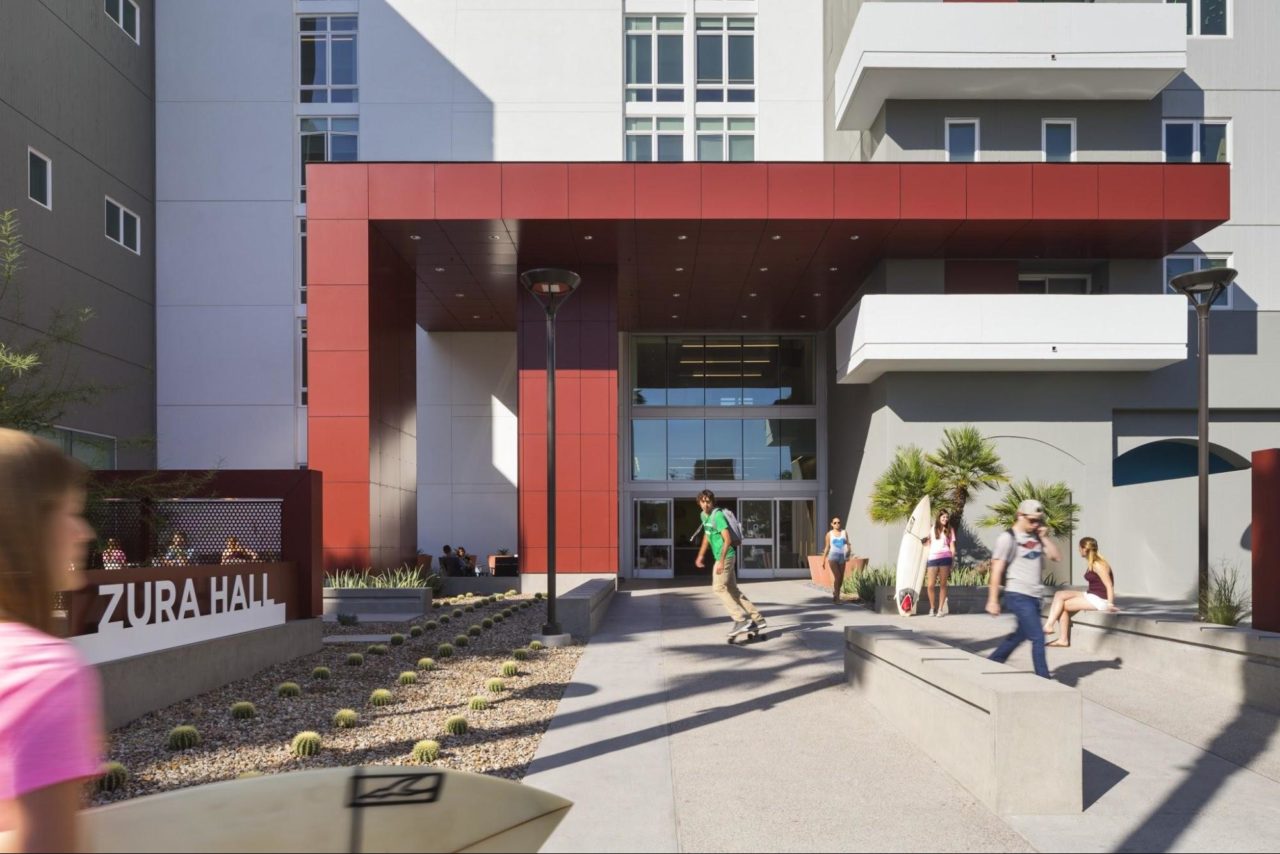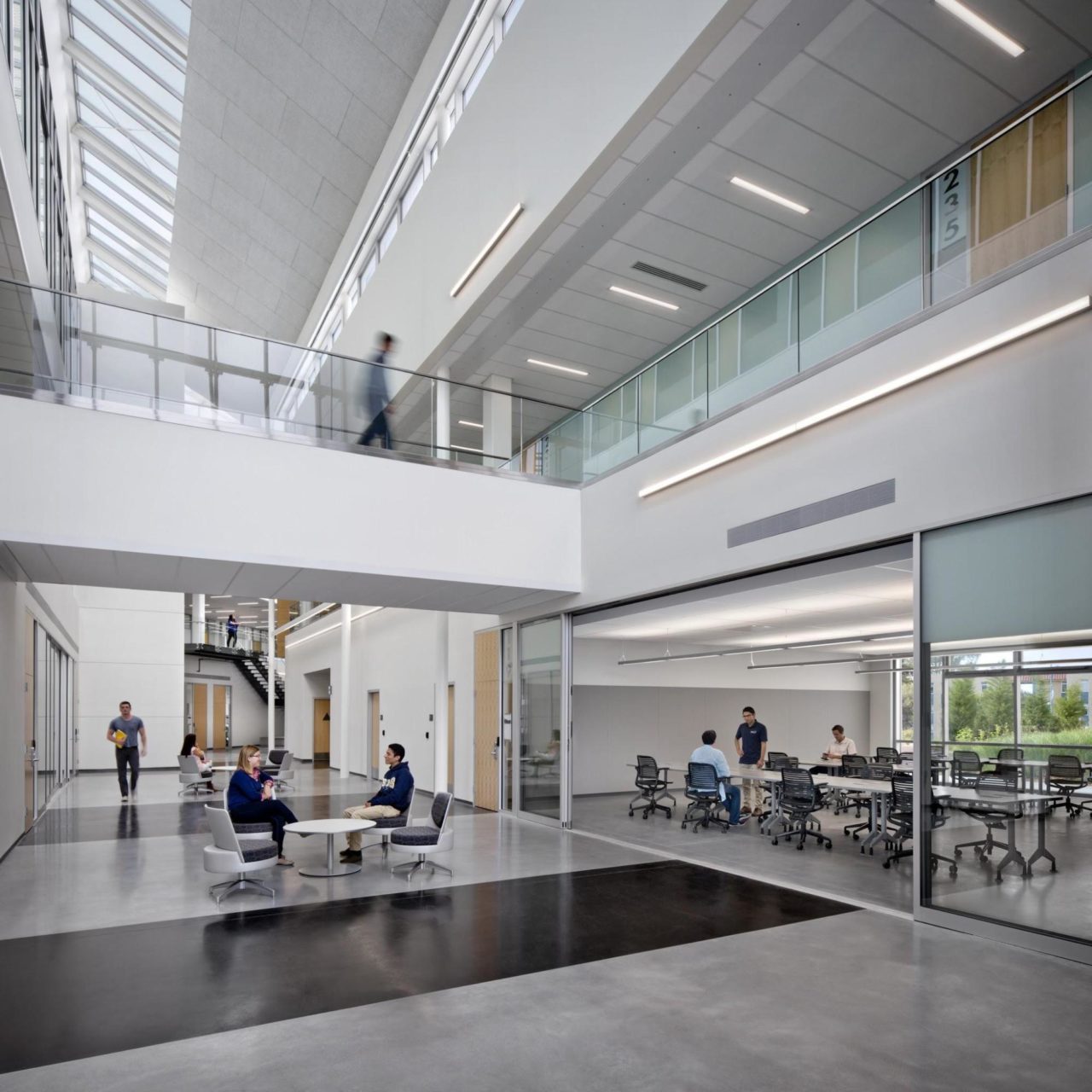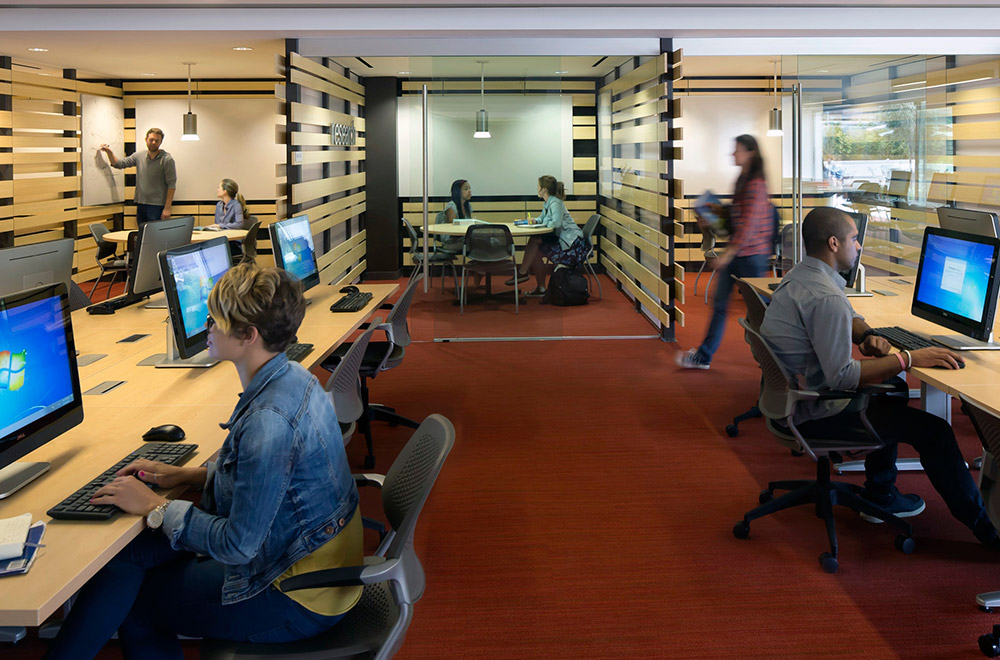Higher education facilities are unique spaces that are meant to bring together a wide variety of people, pursuing different fields of study. These spaces have to accommodate a wide range of ages, from incoming freshmen to graduate students, to tenured professors. Creating a harmonious environment that facilitates these different pursuits is no small task. The architecture of a university has an incredible impact on social intricacies, contributing to the entire experience of those who attend. As designers, it’s our job to take these nuances into consideration and to collaborate with administrators, educators, and students. By encouraging this partnership with the users of the space we, as higher education architects, create campuses that reflect the values and priorities of those who occupy the space.
Higher Education Architects and Design Impact
The world of higher education is a unique arena, with an incredible range of needs within the archetype. For example, a community college with a large commuter population will have a very different layout than one that has a large population of students that live on campus. Acknowledging these differences and tailoring the program to fit these needs is the main task of any designer working on higher education projects.
 Crafting Impactful Campuses
Crafting Impactful Campuses
There are endless ways that the design of a campus has an impact on the overall effectiveness of one of its facilities. Not only can architecture inspire imagination and creativity, motivating students to work to their full potential, but it also can unite students, teachers, and the community. A few strategies one can take to help create impactful spaces are:
- Facilitate Cross-Pollination. Typically, higher education campuses are divided into different “schools”, with students and professors of particular fields of studies grouped into one or two buildings. However, newer facilities and even renovations are re-thinking this concept. Rather than separating these schools, spaces are being designed to facilitate interaction between these different disciplines.
- Curate Student-Centric Spaces. Getting students to feel comfortable on campus can be addressed with thoughtful design. Creating spaces that are specifically suited to cater to student needs, such as comfortable lounge spaces to gather with study groups, can help contribute towards student comfort and a sense of belonging.
- Create Outdoor Opportunities. Great campuses know the impact of expansive green spaces and opportunities to experience nature. These spaces welcome students and visitors alike, as well as create the opportunity for impromptu sporting activities, music, and studying. The natural beauty of a well-designed outdoor space also contributes towards more positive experiences and brings the campus community together while they travel between buildings.
- Designing Multipurpose Spaces. The expense of building or renovating a university is quite significant, so ensuring their relevance for many years is a critical part of the equation. Long-term flexibility needs to also meet the current day-to-day needs of educators, allowing for direct instruction, group work, and independent study. Some ways to achieve more fluid multipurpose spaces is through flexible seating, different sized tables, and even moveable walls that can transform a space entirely.
- Pay Attention to Lighting. The US Department of Education has reported that classrooms with ample daylighting saw a 20 and a 26 percent increase in academic scoring rates in math and reading, respectively. In addition to this improved success, natural light makes people happier, reduces stress and physical fatigue, and can even combat illness. Finding more ways to allow natural light in improves the environment for everyone working and learning on campus.
There are infinite ways for higher education architects to make an impact on campus, and they should be highly tailored to suit each individual facility. The climate, community, and history all contribute towards design choices. What works on one campus might not be a fit for another. So, as designers, it’s important for us to do our research, and have a thorough understanding of the project we’re working on, in order to create the most impactful campus for the client.
 HMC’s Role in Higher Education
HMC’s Role in Higher Education
HMC Architects have been working with clients in higher education, from many different communities and campus sizes, for decades. We’ve tackled renovations, such as the El Camino College STEM Center in Torrance, California, and Zura Hall at San Diego State University in San Diego, California. We have expertise in building sustainable academic buildings like thee CSUMB Business and Information Technology Building in Monterey Bay, California and establishing new campuses like the Palomar College Education Center in Fallbrook, California.
At HMC Architects, we champion the creation of an environment that nurtures community as well as learning in higher education facilities. We’re experienced leaders in researching the latest methods in teaching, and incorporating those methods into classrooms, both traditional and innovative. To learn more about how you can create a positive social impact through design, contact HMC Architects today. For specific questions related to your campus, email Ken Salyer, HMC’s Higher Education Practice Leader, directly.



